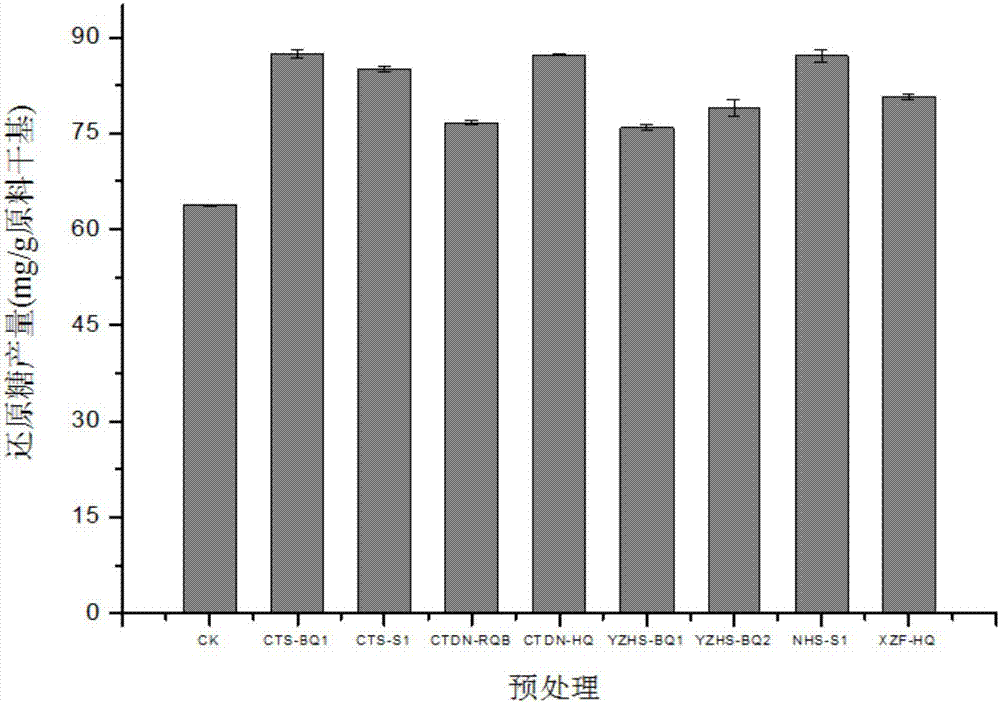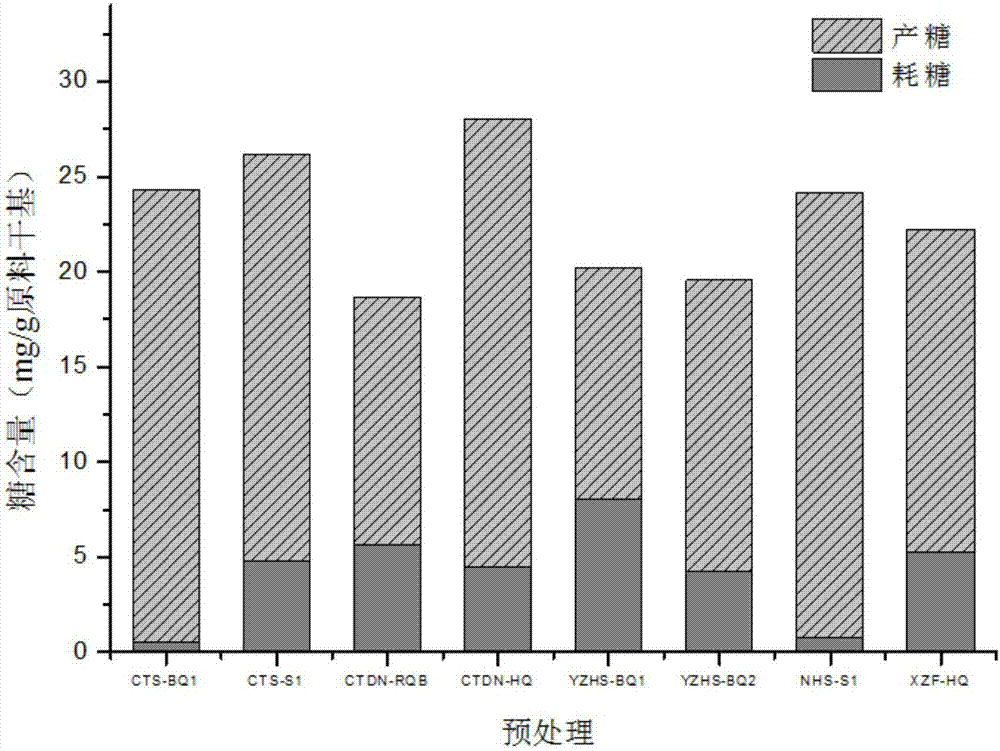Bacillus for promoting enzymolysis of eichhornia crassipes substrate to produce sugar and application thereof
A technology of bacillus and water hyacinth, which is applied in the field of solid waste resource utilization, can solve problems such as less reports, and achieve the effects of improving sugar production, enriching genetic resources, and economical effects.
- Summary
- Abstract
- Description
- Claims
- Application Information
AI Technical Summary
Problems solved by technology
Method used
Image
Examples
Embodiment 1
[0032] The present embodiment has carried out the preliminary screening of degumming microorganism, and concrete screening process is as follows:
[0033]Pond water, pond bottom mud, South Lake water, South Lake bottom mud, Yezhi Lake water, Yezhi Lake bottom mud, fresh pig manure and vigorously growing water hyacinth hyacinth strains were collected from the ponds growing water hyacinth near the pig farm of Huazhong Agricultural University. Wash the water hyacinth hyacinth strain, cut it into small pieces of 1-2 cm, and air-dry the surface moisture. Weigh 10g of bottom mud (containing water) in a sterile Erlenmeyer flask equipped with 90mL of sterilized water, shake at room temperature for 1 hour at an oscillation speed of 125r / min, and then filter with two layers of gauze to obtain a bottom mud suspension;
[0034] Weigh 5g of air-dried fresh water hyacinth in a sterile Erlenmeyer flask, add 30mL of water sample and sediment suspension respectively, then add 270mL of sterile ...
Embodiment 2
[0036] In this embodiment, the degummed microorganisms obtained in Example 1 have been re-screened, and the specific process is as follows:
[0037] The strains obtained from the primary screening were inoculated into the degumming medium respectively, and cultivated for 3 days at 35°C and 145rpm, and the liquid phosphate-dissolving medium without adding any bacteria was used as the control group. After the cultivation is completed, the solid-liquid separation, the total reducing sugar content of the liquid is measured by the DNS method, the solid is dried at 65 °C, and the enzymatic hydrolysis is carried out with a cellulase load of 30 FPU / g substrate for 72 hours, and the reducing sugar production in the enzymatic solution is detected by the DNS method . The result is as figure 1 As shown, the above-mentioned 8 strains screened by the present invention all have promoting effect on the enzymatic hydrolysis sugar production of substrate after the above-mentioned 8 strains scr...
Embodiment 3
[0039] This embodiment makes identification to strain CTS-BQ1
[0040] (1) Colony morphology and properties of strain CTS-BQ1
[0041] The colony is dirty white, the surface is smooth and moist, and the edges are irregular, and it is Gram-positive bacteria.
[0042] (2) Molecular biological identification of strain CTS-BQ1
[0043] The CTS-BQ1 strain obtained from the above screening was identified by molecular biology methods, and the DNA of the strain was amplified by PCR using universal primers 27F and 1492R. The amplified product was sequenced by a sequencing company, and the sequence was compared with the GenBank database. BLAST comparison of the sequences in the strain showed that the similarity between the strain and Bacillus axarquiensis was more than 99%. Combined with morphological characteristics, cultural characteristics and 16S rRNA sequence analysis, the strain was identified as Bacillus axarquiensis.
PUM
 Login to View More
Login to View More Abstract
Description
Claims
Application Information
 Login to View More
Login to View More - R&D Engineer
- R&D Manager
- IP Professional
- Industry Leading Data Capabilities
- Powerful AI technology
- Patent DNA Extraction
Browse by: Latest US Patents, China's latest patents, Technical Efficacy Thesaurus, Application Domain, Technology Topic, Popular Technical Reports.
© 2024 PatSnap. All rights reserved.Legal|Privacy policy|Modern Slavery Act Transparency Statement|Sitemap|About US| Contact US: help@patsnap.com










